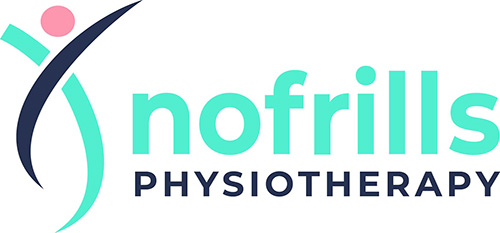Services
Having Elbow or Wrist Pain? A Guide to Physiotherapy Treatment for Relief
Strained or Inflamed Causes, Symptoms and Relief Treatment
Experiencing Elbow or Wrist pain?
If you participate in sports, hobbies, or jobs that involve repetitive arm movements, you may be more likely to experience pain in your elbows and wrists. This pain often stems from overuse or strains in the muscles and joints. Physiotherapy can help alleviate discomfort in these areas.
The elbow is a robust joint that typically resists degenerative conditions like arthritis; however, elbow pain is often the result of injuries or overuse. In contrast, the wrist consists of numerous small joints, bones, muscles, and ligaments that connect to the fingers and forearm. Wrist pain, like elbow pain, usually occurs due to overuse, injuries, or strain.

Common causes for elbow & wrist pain that we treat
Tennis Elbow
Tennis elbow occurs when the tight band of tendons in the forearm muscles repeatedly rubs against the bony prominence on the outer part of the elbow (lateral epicondyle) during the bending and straightening of the arm.
Think of it like a tight rope being rubbed over a rock, snapping back and forth. Over time, the fibers become frayed and ultimately fail. This process is similar to many degenerative tendon issues, including tennis elbow.
As a result, micro-tears develop in the tendon, leading to inflammation and pain.
Trigger Finger
Golfer’s Elbow
Golfer’s elbow is a painful condition affecting the inner side of the elbow, primarily caused by overuse of the forearm muscles connected to the elbow. These muscles are responsible for bending the wrist and rotating the forearm. Despite its name, this condition can affect non-golfers as well.
Repetitive wrist flexion activities—where the wrist bends towards the palm—can lead to golfer’s elbow. This includes sports like golf, tennis, and badminton, as well as any activities that involve repetitive throwing, such as cricket and netball.
Carpal Tunnel Syndrome
Carpal Tunnel Syndrome is caused by nerve compression in the wrist. The carpal tunnel is formed by the wrist bones and the transverse carpal ligament, which runs across the palm side of the wrist. Due to the narrowness of this tunnel, even slight swelling or thickening of surrounding structures can exert pressure on the median nerve.
The median nerve is responsible for sensations and movements in the palm side of the thumb and most fingers.
When pressure on the median nerve increases, it can lead to symptoms such as pins and needles, numbness, pain, and weakness in the arm, hand, or fingers.
DeQuervain’s Syndrome
In De Quervain’s syndrome, the sheath covering two tendons on the outer side of the thumb becomes inflamed and swollen. The tendons involved are the extensor pollicis brevis and the abductor pollicis longus, both of which help move the thumb away from the hand in line with the palm. These tendons run parallel from the forearm to the thumb and normally slide smoothly within the sheath. However, when the sheath becomes inflamed, it restricts thumb and wrist movement.
F.A.Q.
Frequently Asked Questions

What can I do to prevent Wrist Pain?
Consulting a physiotherapist as soon as possible can lead to a more efficient recovery. Delaying treatment often allows the condition to worsen, resulting in scar tissue buildup that can complicate healing. If you’re experiencing severe shoulder pain that limits your movement, it’s important to seek treatment right away.
What can I do to prevent Elbow Pain?
Preventing common overuse injuries that lead to elbow pain can be quite straightforward. If you participate in sports or hobbies that frequently involve your elbow, be sure to incorporate stretching into your routine.
Stretching both before and after activities can help reduce the risk of pain or injury. Additionally, strengthening the surrounding muscle groups—such as the forearm, biceps, and triceps—can also be beneficial.
By building strength in these areas, you can alleviate some of the strain on your elbow joint during demanding movements, thereby preventing pain and injuries.
When should I see a Physiotherapist for Elbow or Wrist pain?
Consulting a professional physiotherapist as soon as possible can lead to a quicker recovery. It’s particularly important to seek help immediately if you’re experiencing severe pain that limits your movement, or if the pain worsens with specific movements or activities. At Core Concepts, we are committed to addressing your concerns and helping you return to full activity.
What are the treatments available?
We utilize various treatment methods for elbow and wrist pain, including manual therapy and strengthening exercises. Your therapist will develop a personalized treatment plan based on a thorough assessment of your condition. In more severe cases, surgery may be necessary, and we can refer you to a specialist if needed after our evaluation.
Office
279 Tanjong Katong Road
Singapore 437062
Monday to Friday : 9am – 8pm
Saturday : 10am – 7pm
Sunday : 10am – 6pm
Services
Knee Pain
Shoulder Pain
Neck Pain
Elbow and Wrist Pain
Ankle and Foot Pain
Stretch Therapy
Sports Therapy
Women's Health
Contact
(+65) 9007 1085
hello@nofrillsphysiotherapy.com
Address: 279 Tanjong Katong Road
Singapore 437062
Other Physiotherapy Services
Shockwave Therapy
Dry Needling
Sports Massage
Functional Fitness
Workplace Health
